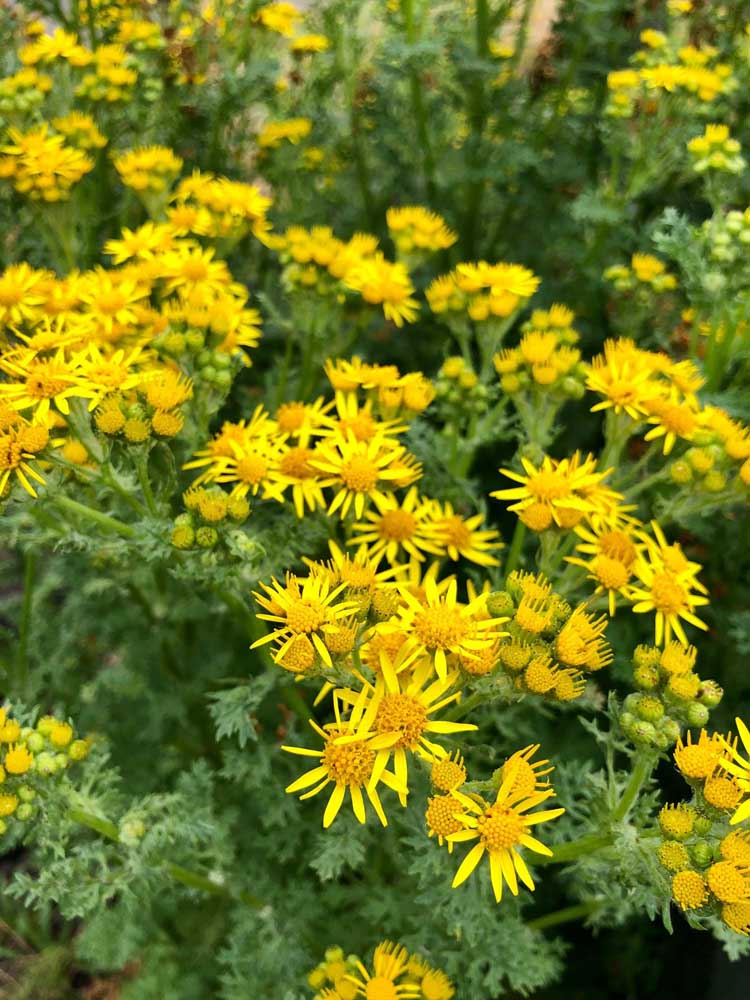Tansy ragwort is a nasty, invasive weed
Published 9:22 am Friday, July 9, 2021

- Tansy ragwort should be pulled up and disposed of in the garbage, or sprayed with herbicide before seeds form.
The bright yellow flower popping-up in clusters along local roads this month is called tansy ragwort (Jacobaea vulgaris), and it is a nasty, invasive weed.
Tansy is highly toxic to humans and livestock, and when ingested can cause bloody diarrhea, liver failure, and a myriad of other unpleasant symptoms, including death. Alkaloids found in the flowers, leaves, stems, and roots are metabolized by enzymes in the liver into more toxic forms. These toxic metabolites accumulate and eventually cause irreversible damage, including cirrhosis and liver failure. Since the damage is cumulative, repeated exposure poses the greatest risk. Tansy is a common problem in pastures and rangeland, where it easily out-competes native vegetation and reduces available grazing acreage. Most animals will avoid grazing on tansy in the field because it has a bitter taste. But when cut and dried, it retains its toxic properties and loses the bitterness. Tansy hidden in a hayfield can be easily harvested, dried, baled, sold and served before anyone is the wiser, especially the hungry animals.
Tansy poses a threat to humans as a contaminant in our food production system, with long-term consumption being the greatest concern. A wide variety of products are susceptible to contamination during production, including: milk, flour, and herbal remedies. Several studies have even shown that bees foraging from tansy ragwort flowers will produce toxic honey, with levels of alkaloids high enough to threaten human health when consumed regularly over time. This is part of the reason that honey is not recommended for consumption by infants.
A mature tansy ragwort plant can produce 100,000 to 250,000 seeds, which can remain viable in the soil for a decade or more. For long-term control, it is crucial that mature plants are eliminated from the population. Tansy is relatively easy to control compared to most other noxious weeds. All you need is a pair of gloves and some free time. Plants can easily be pulled-up, roots and all, by grabbing near the bottom of the stem and pulling up. Place the plants into plastic bags and dispose of them at your nearest solid waste facility. For larger infestations, the use of herbicide may be appropriate. Effective control can be achieved with products containing glyphosate, 2,4-D, and/or triclopyr (For more information regarding the use of herbicides, contact Pacific County Noxious Weed Control Board).
The tansy ragwort issue will not go away and will certainly get worse unless we do something about it. If you have tansy ragwort on your property, get rid of it immediately. Do not wait for it to become a problem that you are not equipped to handle. A large-scale weed control project can cost thousands of dollars, and that does not include the fines that you may have to pay as a penalty for failure to meet your responsibilities as a landowner (i.e. RCW 17.10.140). Be a good steward of the land and keep it healthy. If your neighbor has tansy, don’t get mad, talk to them about it! Many people see it everyday and have no idea that it is a problem. Please share this information widely and take corrective action when and where you are able. If you have any questions about the information presented here, or would like more information about tansy ragwort or other noxious weeds, contact the Pacific County Noxious Weed Control Board director Jeff Nesbitt (Jnesbitt@co.pacific.wa.us; PCweeds.org).






